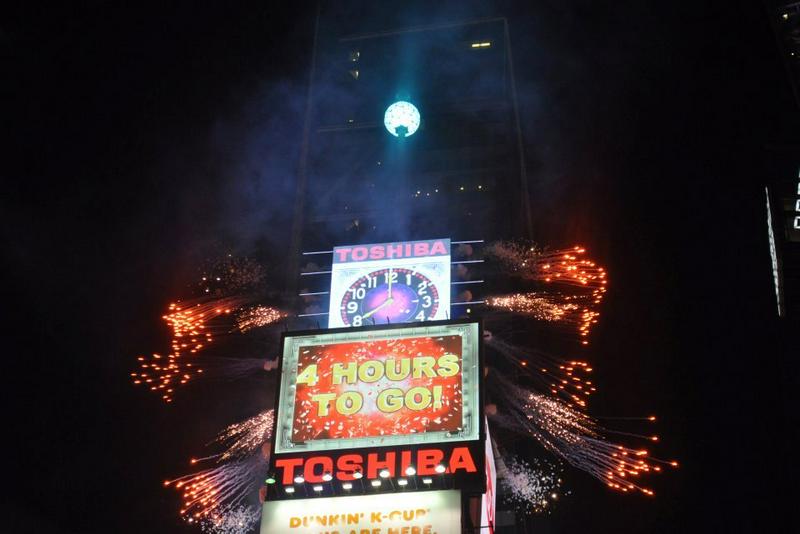Why Do We Watch A Ball Drop On New Year’s Eve?
By | December 5, 2019

Every year on December 31, thousands of people gather in Times Square to ring in the new year. This televised New Year’s Eve celebration, which is watched by millions of people around the globe, is often accompanied by fireworks and live entertainment. But the highlight of the event occurs as the clock changes from 11:59 PM to 12:00 AM, and the glittering ball atop the One Times Square building drops 141 feet, signaling the start of the new year. While this tradition has been occurring annually for more than a century, the story of “time balls” is even older.
Time balls were invented by UK Royal Navy Captain Robert Wauchope and the first one was built at the Portsmouth Harbor in 1829. The second one, which still exists, is located at the Royal Observatory in Greenwich in 1833. They were originally used to aid maritime navigation by helping captains to ensure their marine chronometers kept accurate time. Marine chronometers, invented by John Harrison, was a type of clock used to measure the time of a fixed location, which was necessary to determine a ship’s longitude. Therefore, before setting sail, captains would synchronize their chronometers with a time ball set to drop at a specified time, usually one in the afternoon.

The time balls were originally placed near observatories to be assured of accurate time signaling based on the positions of the stars. However, the invention of the telegraph and rapid communication allowed them to be built in more remote locations and increased their accuracy. While these time balls were built for the purpose of maritime navigation rather than entertainment, it was not unusual for crowds to gather around them in the afternoon to watch the ball drop.

The first time, the ball in the United States was built in 1845 on top of the United States Naval Observatory in Washington D.C. Several more followed between 1845 and 1902, including one built in 1877 on top of the Western Union Telegraph’s headquarters in New York City, which received its time signal electronically from the U.S. Naval Observatory. Thanks to technological advancements, time balls had become obsolete by 1908; however, many of them remain functional and serve as historical tourist attractions.

The first Times Square New Year’s Eve celebration was held in 1905 by Adolph Ochs, owner of The New York Times newspaper, to commemorate the opening of the newspaper’s new headquarters at One Times Square. At that celebration, the new year was welcomed with a fireworks display. In December 1907, a fireworks ban inspired Ochs to come up with a new tradition. At the suggestion of his editor-in-chief Walter Palmer, Ochs hired Artkraft Strauss to design an illuminated time ball which would be lowered from the flagpole on top of the building. The time ball was made of wood and iron, had a diameter of almost five feet, and weighed over seven hundred pounds.

Even after The New York Times moved its headquarters to another building in 1913, the time ball has dropped from One Times Square every year since 1907, with the exceptions of 1942 and 1943, when it was canceled due to wartime blackouts. Since 2009, the ball has been left on display at the top of the building for the entire year. A smaller version of it can be seen displayed at the visitor center in Times Square.

